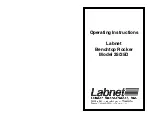
RE 51150-B/07.11 | Drive modules
Bosch Rexroth AG
29/
56
Assembly
Assembly
7
This chapter describes the assembly of the drive module at its place of use as
well as the connection of the drive module to the hydraulic system, the electrical
systems and the water supply of the machine, if applicable.
For information regarding the installation into the complete machine, particularly
regarding its overall function and logic mode of operation, please refer to the
instructions and/or the documentation for the complete machine.
Unpacking
7.1
Remove the drive module packaging.
f
Dispose of the packaging material in accordance with the national regulations
f
in your country and/or your company-internal specifications/procedures.
Drive module assembly
7.2
To assemble the drive module proceed as follows:
Position the drive module as specified in the assembly drawing of the machine.
1.
Ensure that the footprint contact associated with mounting is consistent.
2.
Always ensure a vertical installation position (UPE2)!
3.
Level the drive module so that its longitudinal and transverse axes are horizontal.
4.
Securely fix the drive module at the mounting positions specified in the gen-
5.
eral documentation.
Hydraulically connecting the drive module
7.3
Remove the plugs and flange covers (colored plastic) and replace them by
pressure-resistant fittings or flanges.
You should observe the manufacturer’s installation instructions for the screw
f
fittings to ensure there is no external leakage. We recommend the use of fit-
tings with elastic seals.
f
Before installing, clean the connection lines to the hydraulic system, ensuring
they are free from dirt, scales, chippings, etc. Welded pipes must be blank on
the inside and flushed.
Do not use cleaning rags/cotton waste for cleaning.
f
NOTICE
! Formation of backpressure in the tank line (UPE5)!
Damage to hydraulic components
When installing the hose lines make sure that the tank line is not blocked.
f
Observe the project-specific documentation during the assembly.
f
Install the hose lines so that
f
kinking and tensile load of the hose are avoided during operation,
–
the hose is not twisted or turned,
–
the outer layer of the hose is not rubbed off by abrasion or impact.
–
Preparation
Cleaning lines
Connecting hose lines
















































